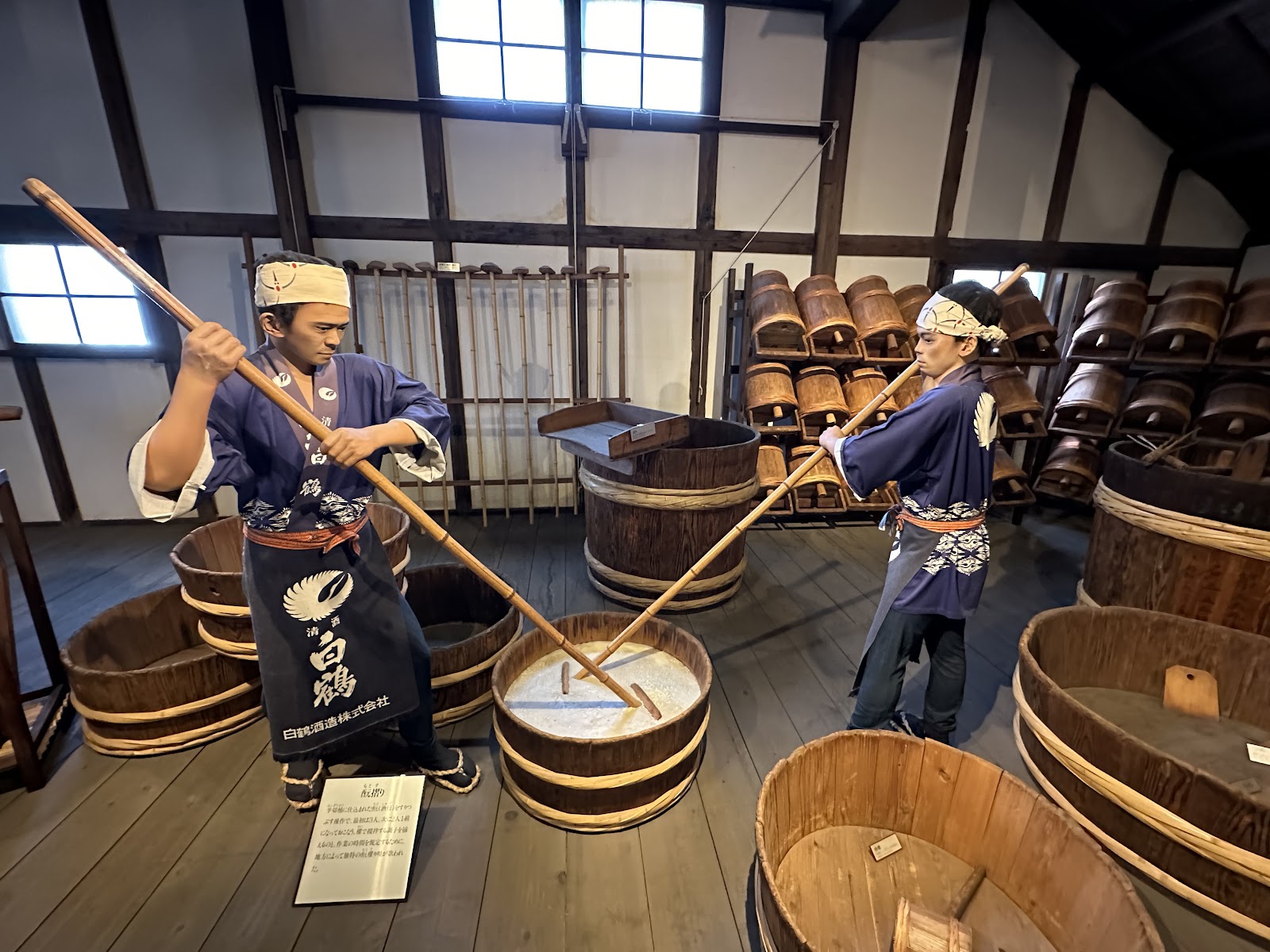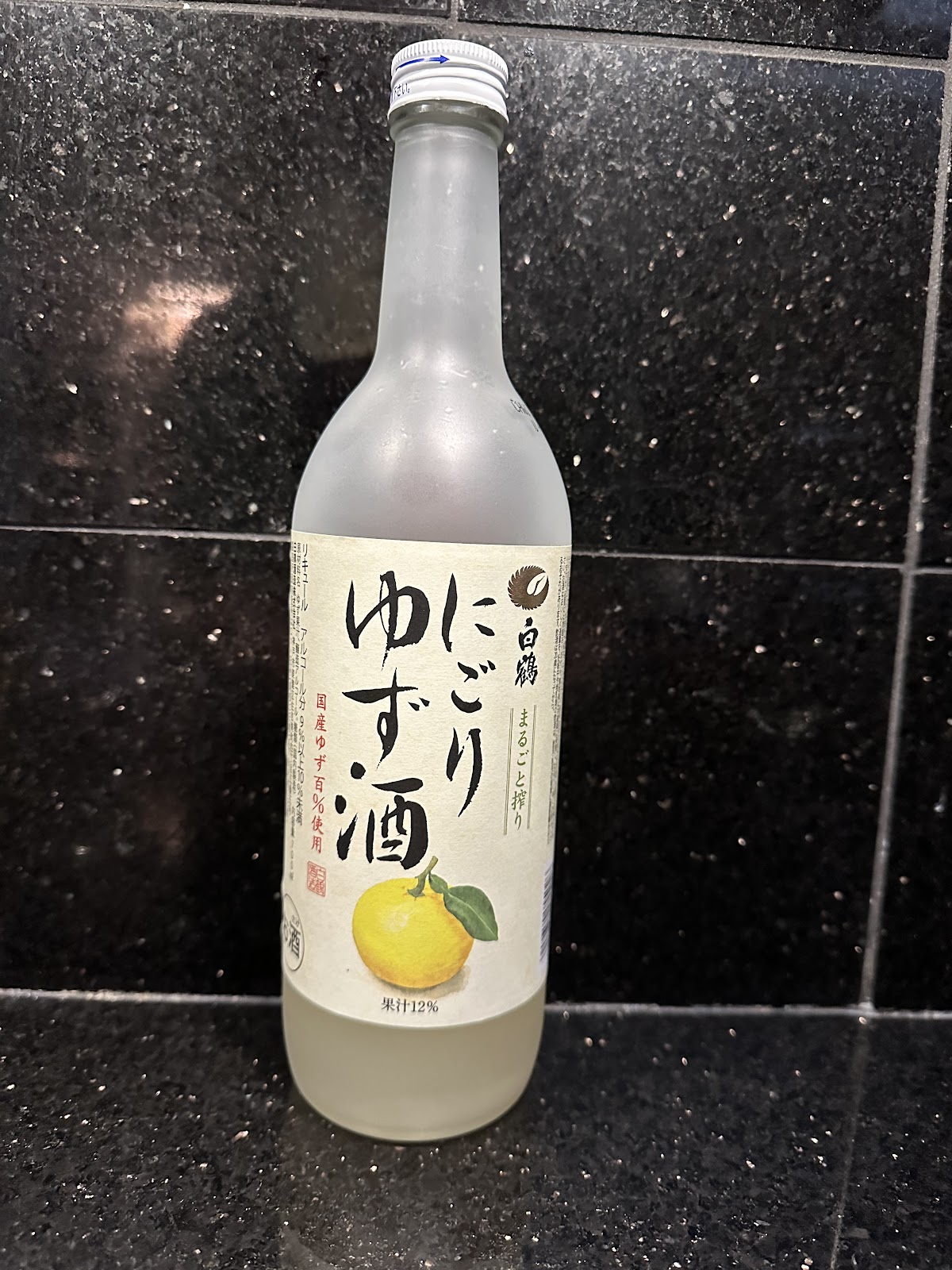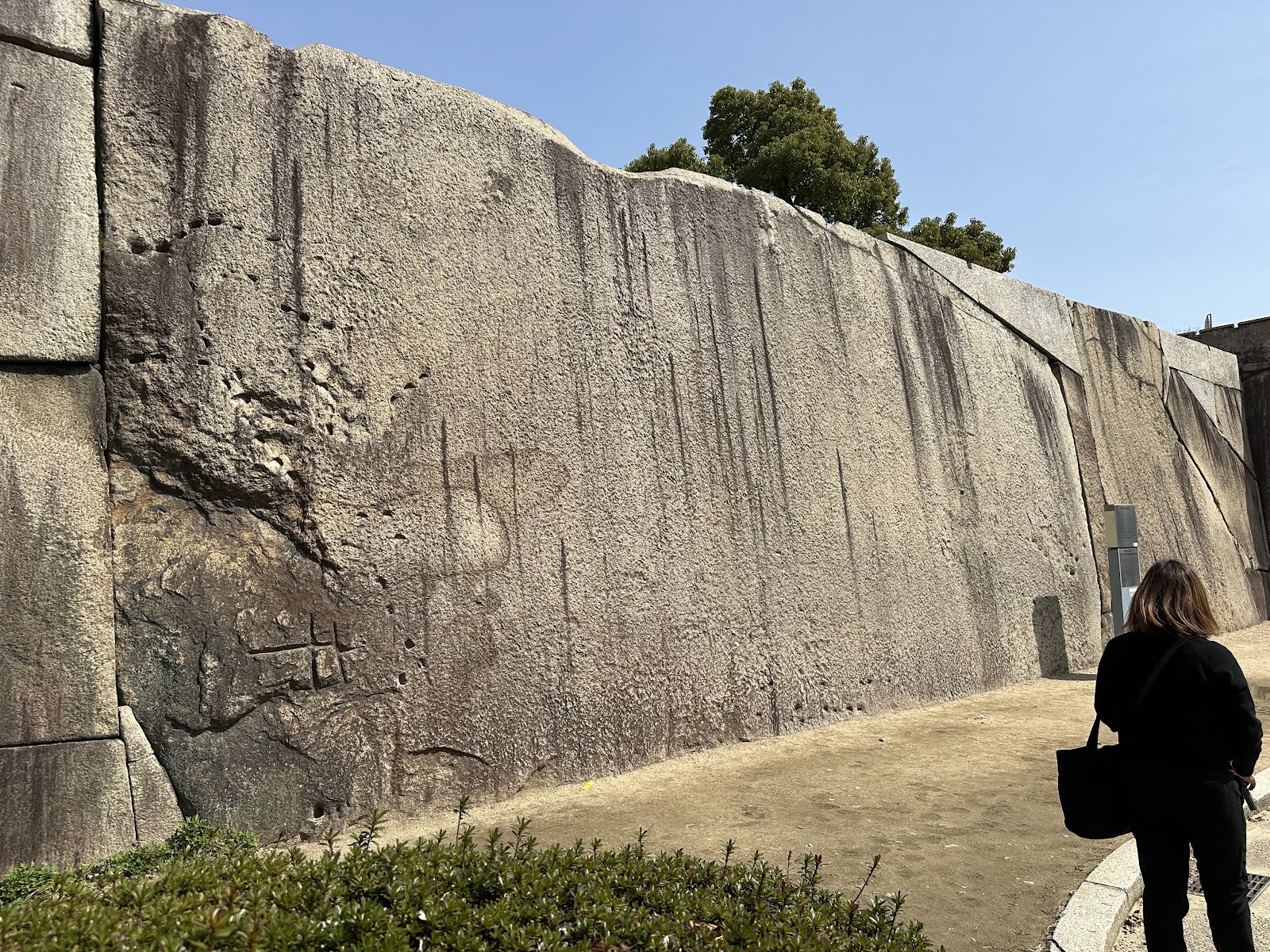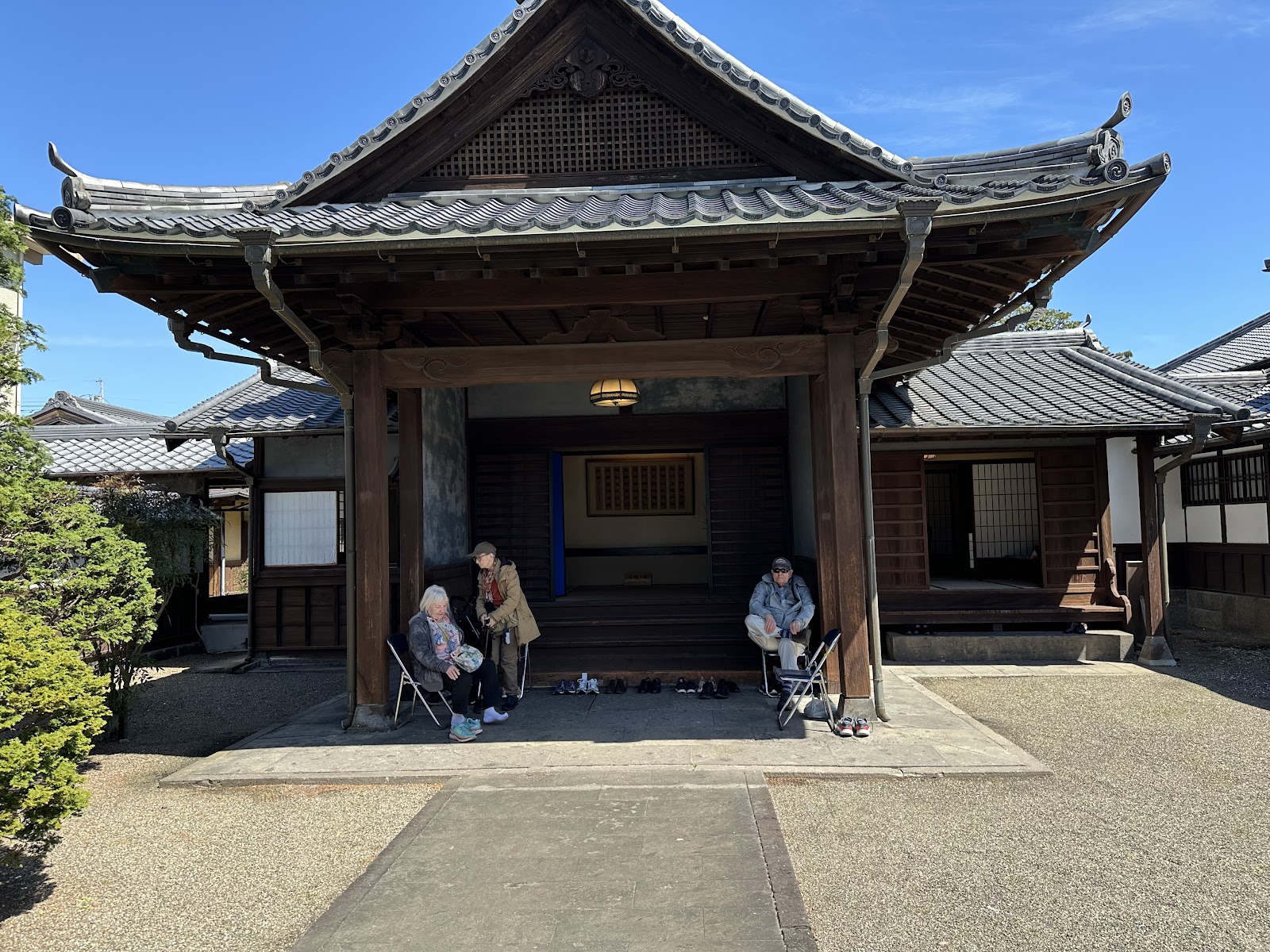 |
Sam the excellent Korean ambassador, has the ear of
his followers at Haedong Yunggong Temple |
Intermission in Korea
Gym's experience is that the Japanese personality is always polite, very calm, somewhat reserved and always well organized. The Korean personality on the other hand, is more extroverted, quite passionate, very expressive and like the Japanese, also very well organized. Gym would rather go to the pub with a Korean.
On March 25, 2024, Gym and his lovely sidekick, followed a Korean guide named Sam, around Busan for a day. They were delighted with his charisma, energy and charm. In spite of it being a blustery day, Sam made their experience in Korea, one of the highlights of the cruise.
The MS Riviera had steamed over the Sea of Japan from Nagasaki overnight. Busan is just 120 miles from the Japanese coast. It is the second largest city in Korea and would rank as third largest city in Japan. It is one of the busiest ports in the world, busier than any port in Japan. It boasts a population of 3.5 million people and they enjoy a high GDP per capita like that of any city in Japan. Tall luxury condos line the beaches of the chi chi Haeundae District. Despite a high population density, there are many nice parks where the condo dwellers can enjoy the outdoors.
The day started with a visit to the Haedong Yunggong Temple. It's an important complex of Buddhist temples located along one of Busan's rockier sea shores. Gym took it all in and thought that it was a little bit gaudy and more like a permanent country fair than a place of worship but whatever works for you, if you're searching for Nirvana. Gym likes the pagoda's but finds giant, golden laughing buddhas kind of odd. Talk about colourful though, reds and golds dominate but anything goes. And, if you want to try roasted silk worms, there is a booth on the way to the parking lot (Gym found them to be nutty and meaty and not at all unpleasant).
Next stop was at Dongbaek Park, where the 2005 APEC Summit was held. The conference venue building sits on the edge of a cliff with an incredible view overlooking the rich neighbourhood of Gangnam, the Haeundae Beach, the incredible Gwangan Bridge and the Sea of Japan. In the main conference room, there is a circular arrangement of chairs for the ministers that attended in 2005 summit, with bronze plaques still affixed, denoting each Pacific nation that participated. Gym couldn't find evidence that Prime Minister Paul Martin attended but some big shot Liberal was undoubtedly there. After leaving that venue, Sam took everyone to a buffet lunch not far from the park, where Gym et al enjoyed a broad arrangement of East-Asian fare.
That afternoon, there was a thorough exploration of the colourful and hectic Millak Live Fish Sashimi Market. Never has Gym seen such a fish market anywhere in the world. Sam finished by trying unsuccessfully to lose some of his group with a whirlwind dash around the narrow streets of the Suyeung District where it seems you can get a bargain on just about everything you need.
That evening the ship would sail back to Japan to make a stop at Hiroshima.
Note: The author has better internet as of the day this is being published so he will provide pics for previous posts in the days ahead.
 |
| The Laughing Buddha at the temple complex |
 |
| Inside the main temple |
 |
| Statues for Mrs. G's birth year - The Rat |
 |
| The pagoda |
 |
| Beautiful Standing Buddha |
 |
| 2005 APEC Summit Venue |
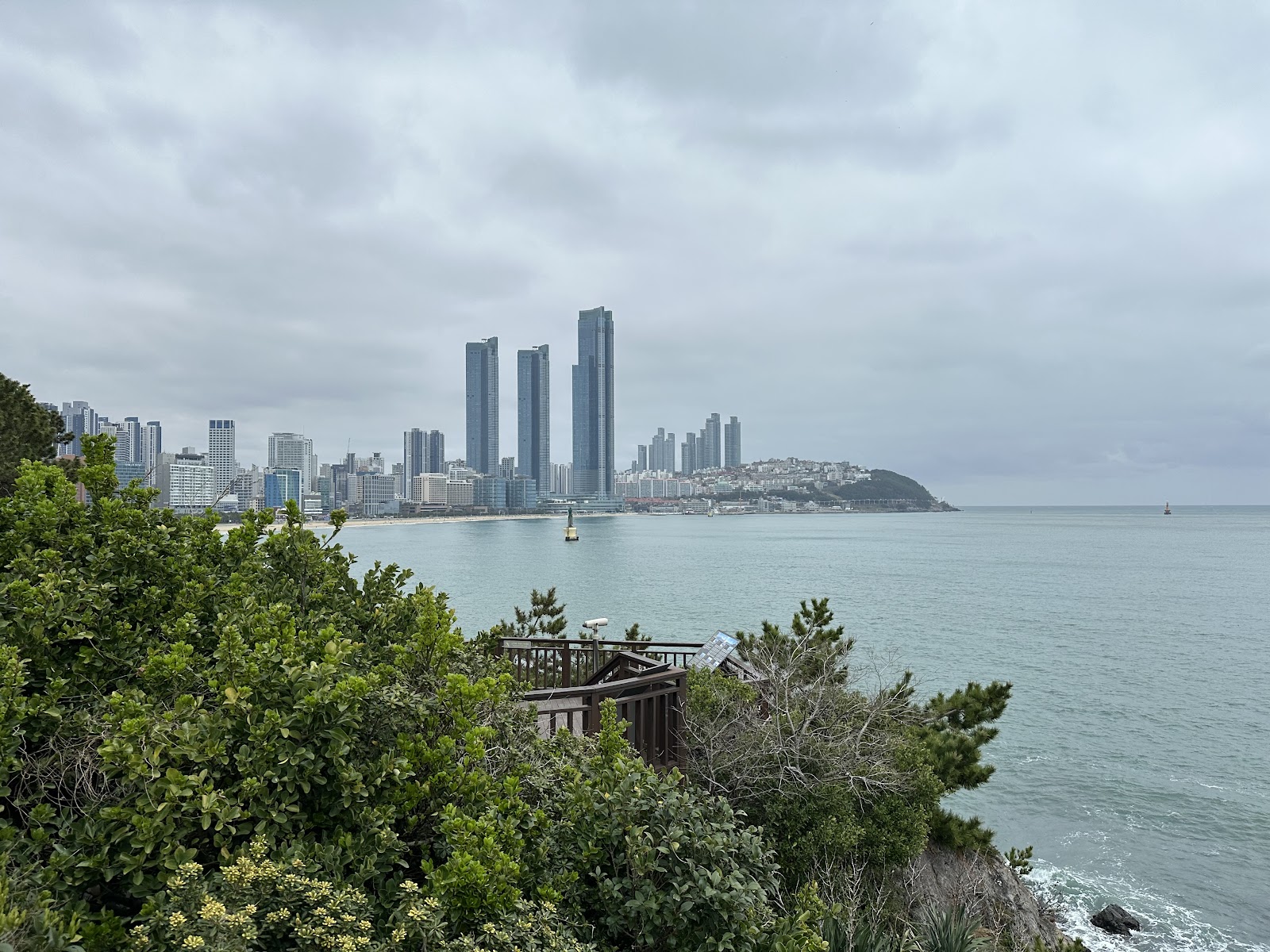 |
| View of Haeundae Area from park |
 |
| Sea of Japan |
APEC countries
 |
| APEC Round Table |
APEC Venue from park
Live Fish for sashimi
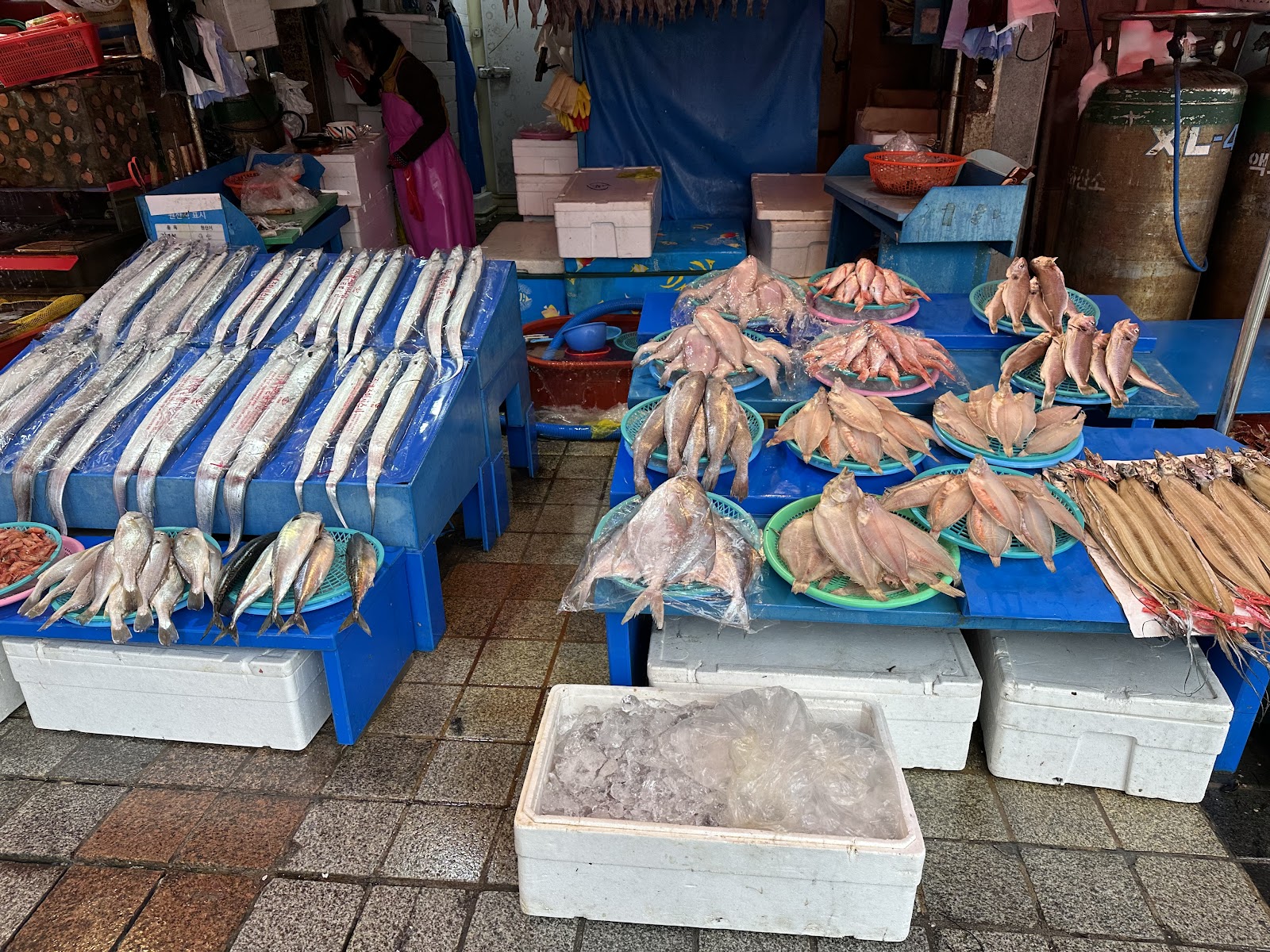 |
| Formerly Live Fish |
 |
| Nice assortment of seafood |
 |
| Suyeung District |
 |
While you are out shopping in Suyeung, drop your cat off
at the Premium Cat Theme Park |
Stay tuned!




